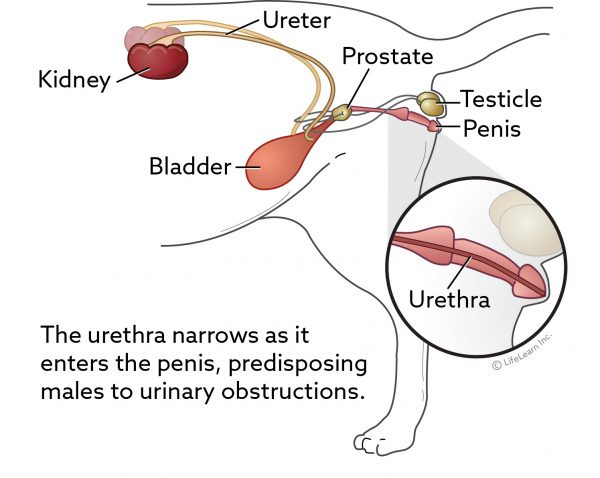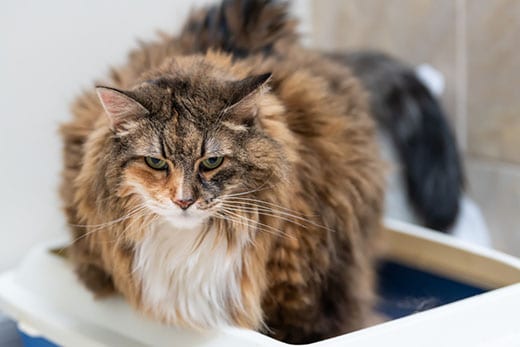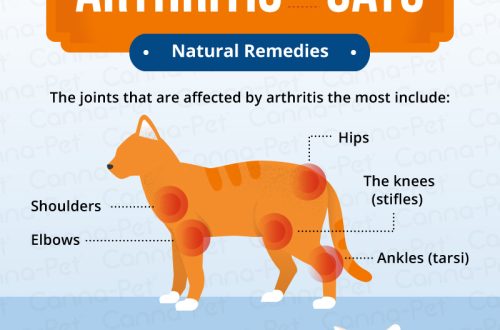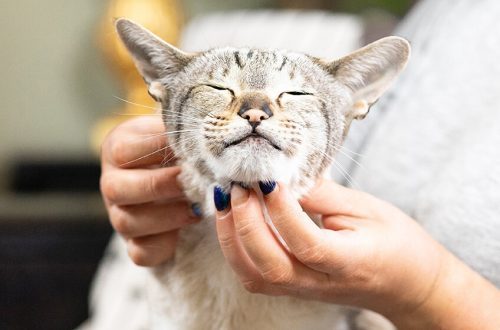
Perineal urethrostomy in a cat: what you need to know
If your cat has persistent problems with urination, your veterinarian may recommend a cat surgery called a urethrostomy. How can this procedure help and how to care for a pet after it?
Contents
Why does a cat need a perineal urethrostomy?
Blockage of the urinary tract is a fairly common problem in cats, especially cats. It can be caused by a lower urinary tract disease that leads to inflammation and swelling of the urethra, the tube that carries urine out of the bladder and out of the body. Blockages can also be caused by stones, mucous plugs, or tumors in the urethra. If the cat cannot urinate, the bladder overflows, which is not only very painful, but also creates a risk of life-threatening damage to the bladder, kidneys and other organs.
In most cases, blockages in the urinary tract can be cleared with a holistic approach: a balanced diet, medication, stress reduction, increased water intake, and/or insertion of an emergency catheter. However, if the blockage of the urinary tract occurs regularly in the pet and is not amenable to medical treatment, then you can consider the option of performing a surgical operation called a perineal urethrostomy.
What is a urethrostomy in a cat
Perineal urethrostomy involves surgically opening the urethra and creating a new, wider opening through which the cat can urinate. This is a fairly simple procedure that has been used in veterinary medicine for a long time and has high rates of effectiveness. The operation is performed under general anesthesia, usually with a local nerve block, which means that the pet will sleep during the entire procedure and will not experience pain during or after the procedure.
Cat urethrostomy: consequences and possible complications
Although perineal urethrostomy operations in cats are successfully performed every day, complications can occur in some cases. These include narrowing of the urethrostomy site, leakage of urine under the skin, bleeding, urinary tract infections, and urinary incontinence. Therefore, it is important that the procedure is performed by an experienced surgeon. In addition, it is necessary to properly care for the pet after the operation.
Problems with urination in an animal can be caused by a primary pathology, such as a disease called feline urological syndrome. If the primary pathology is not corrected, the cat after urethrostomy may continue to have difficulty urinating, blood in the urine and / or “incidents” with urination past the tray.

Alternative treatments
An alternative to PU is the transtase urethrostomy (TPU). However, due to the high efficiency of perineal urethrostomy, TPU is performed less frequently.
Non-surgical treatments require close collaboration with your veterinarian to address the underlying cause of your cat’s urinary tract blockage and closely monitor for any signs of obstruction. However, if the owner does not have the opportunity to watch the pet 24 hours a day, it will be very difficult to do this. For pets with chronic blockages, there are several alternatives.
Cat after urethrostomy: care and support
In order for the pet to recover properly after the operation, the following measures must be taken:
- After the operation, do not let the cat out of the house for several weeks.
- Check the postoperative wound daily for signs of infection. Mild swelling is normal, but severe swelling, foul odor, fever, pain, and colored discharge are signs of infection and should be seen by a veterinarian.
- Make sure your pet urinates at least once a day. If this does not happen, you need to call a specialist.
- The cat must wear a protective (Elizabethian) collar at all times until the veterinarian allows it to be removed. If the pet gnaws the stitches, he may have to return to the clinic for a second operation.
- Give your cat all medications as prescribed by the doctor.
- Feed your pet wet canned food in addition to dry food to increase water intake. Your veterinarian may also recommend feeding him a special medicated diet to promote urinary health in cats.
- If the veterinarian sends the pet home with a special bedding, it is necessary to use it. Otherwise, if debris sticks to the postoperative wound, wipe this place with a damp cloth.
Most cats make a full recovery by the time the stitches are removed, usually 10 to 14 days after the procedure. This manipulation may require sedation, so do not feed the cat before this.
Most pets tolerate perineal urethrostomy well and live long and healthy lives without pain or obstruction after surgery. If PU is recommended for a cat, all necessary information about the procedure must be obtained and the surgeon must be qualified. It is important to feel free to ask questions at the veterinary clinic so that you know how to support your pet during this difficult period.
See also:
Stress and Urination Problems in Cats Urinary Tract Diseases and Infections in Cats What You Need to Know About Feline Lower Urinary Tract Disease (FLUTD¹) Why Your Cat Doesn’t Use a Tray





